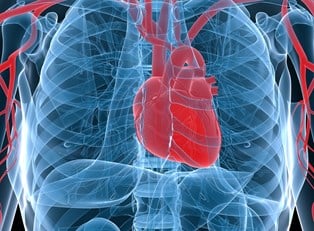Acute coronary syndrome is normally one of three diseases which involve coronary arteries. It includes unstable angina, ST elevation myocardial infarction, and non ST elevation myocardial infarction. These conditions are named this way because of the appearance of the EKG. There is some variation as to which types are termed acute coronary syndrome. It does not include stable angina- a form which occurs during physical exertion and not at rest.
Angina is chest pain caused by reduced blood flow, along with the oxygen it carries, to the heart. This condition can result in damage to the heart, depending upon how long the deprivation occurs and how severe the blockage is. Unstable angina, unlike stable angina, can occur very suddenly, usually at rest or low levels of exertion, or at lower levels of exertion than the sufferer's earlier angina. According to acute coronary syndrome information, the condition is usually associated with coronary thrombosis, but it can also be associated with the use of cocaine. According to acute coronary syndrome information, coronary thrombosis is a type of thrombosis which affects the coronary circulation. It is a type of heart disease associated with blood clotting. It can lead to myocardial infarction, commonly known as a heart attack.
Acute Coronary Syndrome Symptoms
According to the most accurate acute coronary syndrome information available, the main symptom of the condition is chest pain which is felt as tightness in the chest. It also will radiate to the left part of the jaw and the left arm. These sensations are due to reduced blood flow to the heart. The pain may be accompanied by nausea and vomiting, sweating, and shortness of breath. The sensations may be atypical, with pain observed in different ways or sometimes totally absent. The symptoms tend to be absent when the patient is female with diabetes. Other acute coronary syndrome symptoms include anxiety, a sense of impending doom, or heart palpatations. The mere description of chest pain is not enough to warrant a diagnosis of acute coronary syndrome or heart attack. The standard test to determine a diagnosis is the electrocardiogram or EKG. It can reveal heart damage that may result from a heart attack. About one quarter of all heart attacks are symptomless. Women may have fewer symptoms than men. Most commonly the symptoms are weakness, shortness of breath, indigestion, and fatigue. Heart attack is the leading cause of death worldwide for both men and women.
Acute Coronary Syndrome Treatment
The acute coronary syndrome information gathered by the doctor will determine the course of treatment. The treatment normally involves medications such as nitroglycerin, aspirin, and sometimes morphine when pain is severe. If a heart attack is indicated, medication may be injected that destroys blood clots that obstruct the coronary arteries. In this case, a catheter is sent through an artery and advanced to the heart to locate blockages in the coronary arteries. When blockages are located, they can be removed with angioplasty or deployment of a stent. A stent is a tube which is inserted into a blood vessel to counteract constriction of blood flow. According to acute coronary syndrome information, a number of complications can arise in the case of a heart attack. They may occur immediately after or develop over time. Heart failure may occur if the damage to the heart is so severe that it is no longer able to fulfill its role as a blood pump. Long term complications include atrial fibrillation, heart failure, and increased risk of a subsequent heart attack.



